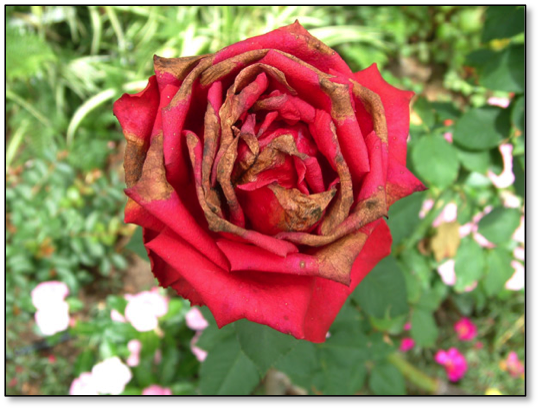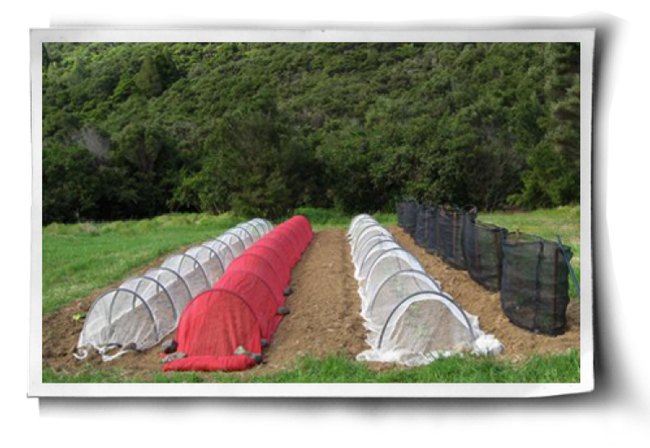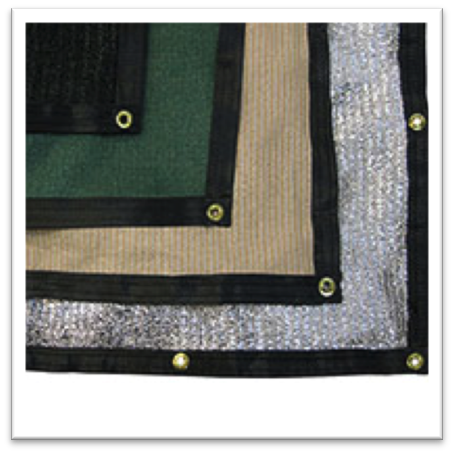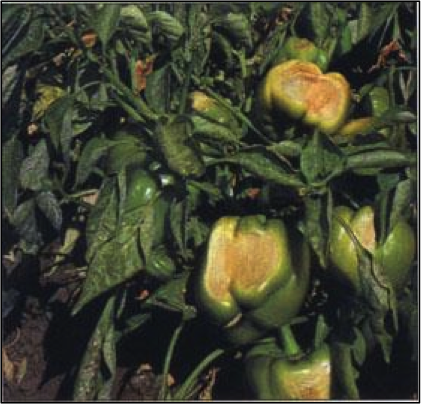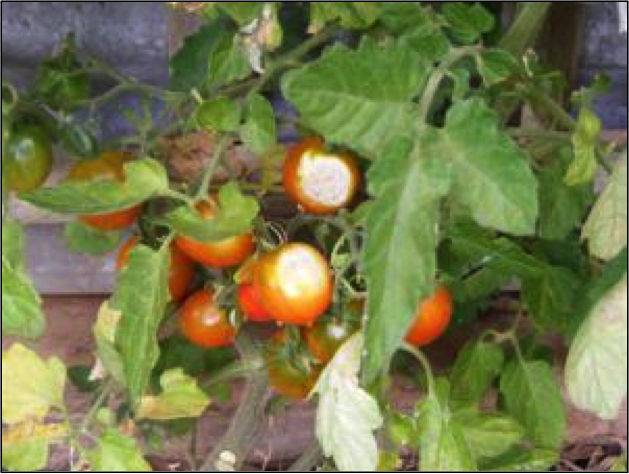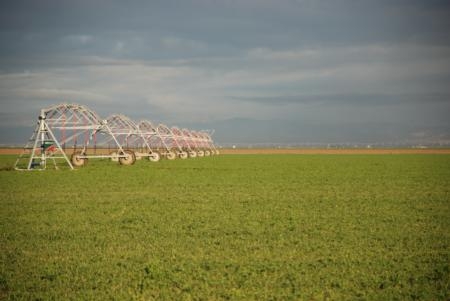From the UC Blogosphere...
Male Wool Carder Bees: In-Your-Face Behavior
She described it to a "T." That would be "T" for territorial. Lynn Kimsey, director of the Bohart Museum of Entomology and...
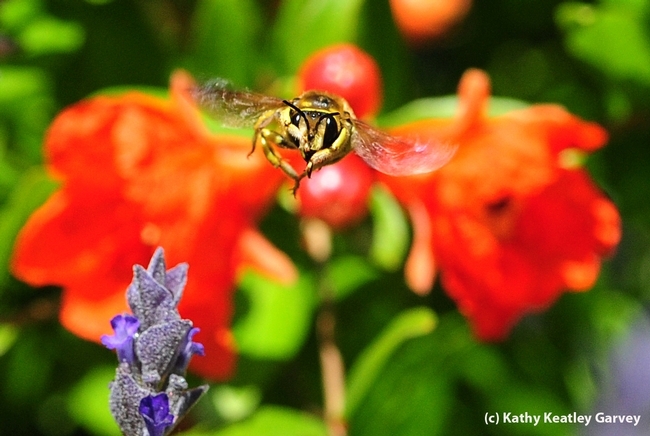
Male wool carder bee heads for the photographer. (Photo by Kathy Keatley Garvey)
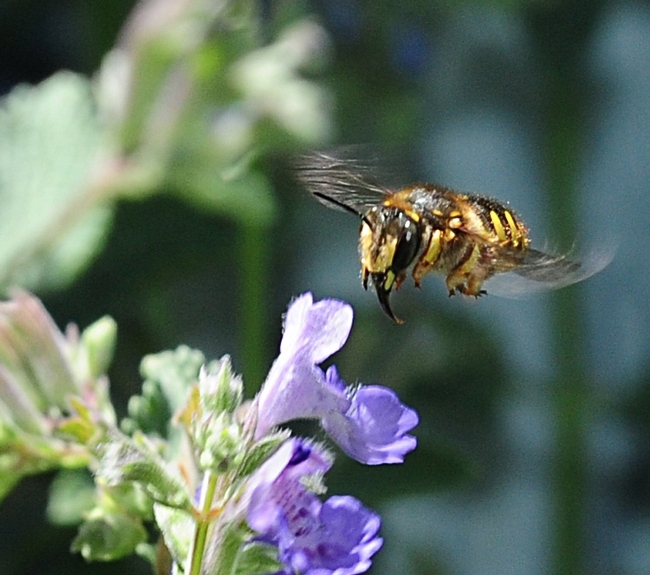
Wool carder bee zeroing in on catmint. (Photo by Kathy Keatley Garvey)
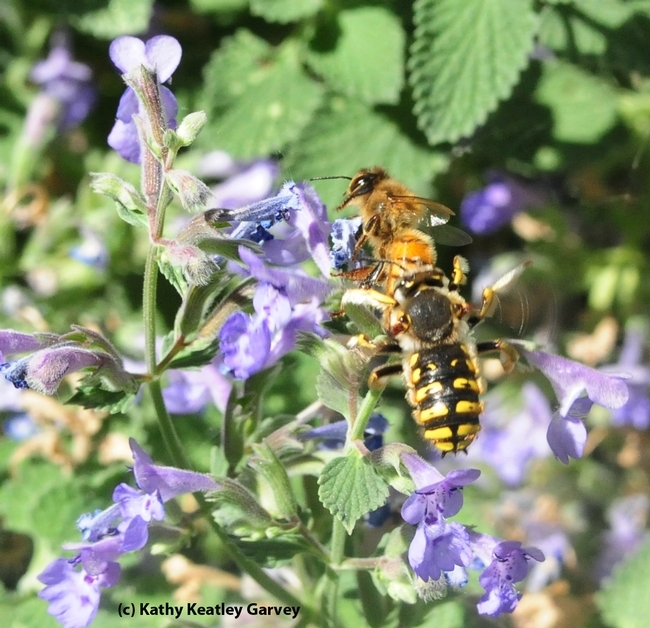
A male wool carder bee attacking a honey bee. (Photo by Kathy Keatley Garvey)
Daily Life For Master Gardeners
Just A Tosser… By Andrea Peck Trash talk always inspires me. - Vince Young My mom tells me...
Have a Few Crickets With Your Kölsch
These things go together: Ham and eggs, macaroni and cheese, and beer and bugs. Beer and bugs? Definitely! Haven't you...
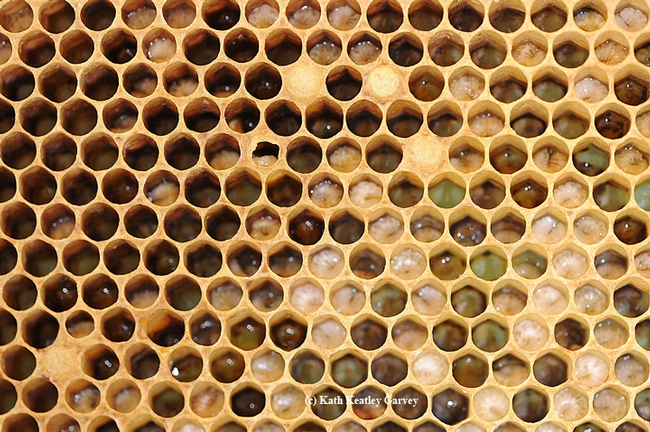
Would you eat honey bee larvae? (Photo by Kathy Keatley Garvey)
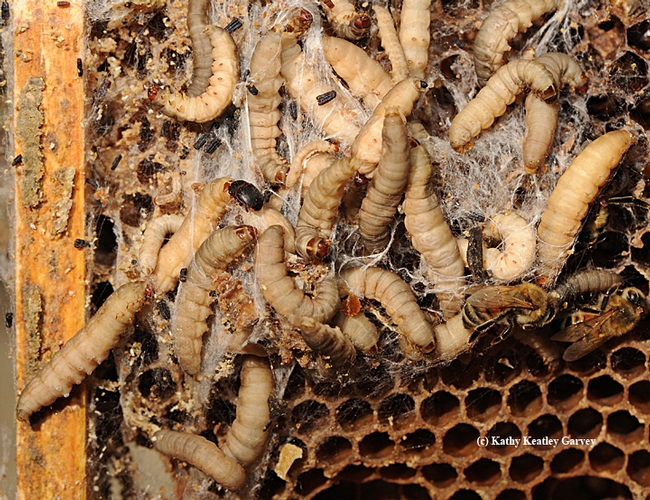
Wax moth larvae: good source of protein? And throw in a few small hive beetles for good measure? (Photo by Kathy Keatley Garvey)
Hot Hot Hot: Finding Relief from the Drought in Fall
"Me mind on fire -- Me soul on fire -- Feeling hot hot hot" are not just lyrics to the catchy one-hit wonder by Buster Poindexter. It's also what we've been thinking (and our plants have been feeling) this summer. Although as of September 22nd, the season technically shifted from summer to fall, the temperatures have remained in the mid- to high 90's.
The hot sun and high temperatures can be brutal on a garden causing plants and vegetables to wilt, and soils to dry out. This isn't only about the heat and sun though; when diminished water availability is added to the scenario, it becomes about the effects that all three combined have on the garden. The goal this year has been to keep a healthy amount of moisture in the soil using less water.
With the water restrictions still in effect, it's important to look at ways to grow a fall garden with less water. One way to do that is by using row covers or shade cloths.
Protecting the plants from direct sunlight by using row covers or shade cloth reduces the leaf temperature and plant watering needs (they don't "sweat" as much). This can raise the production of your garden and reduce your irrigating and fertilizing costs. Its also useful in protecting your vegetable patch from insects and birds.
Row covers are often used in the winter to protect plants from frost, and during the spring and summer months to block out the sun. However, consider using them during the early fall season to protect your newly planted "cool" season crops from the sun and heat. Row covers generally block out 15-30% of the sun, depending upon the thickness of the cloth.
With the autumnal heat we've been having, shade cloth, which is a little heavier, might be an even better way to go. It comes in a variety of colors and densities depending upon the amount of sun to be blocked and what vegetables or plants need protection. While light colored shade cloth will reflect more of the sun's rays and heat, expect higher temperatures under darker shade cloth, unless you provide ample air space.
Shade cloth requires a simple support structure consisting of PVC or metal bows that span one or more rows. The bows support the shade cloth over the crop, providing cooling shade and reducing water needs.
If you are planting a vegetable garden, understanding the light requirements of each crop may allow you to plant some crops in a naturally shaded environment. Lettuce, currants, gooseberries, spinach, cauliflower and most beans can grow in conditions with less than full sun. Under these conditions, water use needs will be reduced due to the natural cooling of the plant.
Even plants that require full sun and love the heat (80-90°), such as peppers and tomatoes, sometimes need shade cloth too due to the intense summer sun or heat. I placed shade cloth over my tomatoes this summer when the temperatures were especially high.
Shade cloth can be placed over plants during the hottest time of the day (11 am to 4 pm) to keep them from getting sunburned or stressed. Sun damage can result in wilted or burned leaves and skin. Many of the cool season crops will bolt or go to seed prematurely in higher temperatures, and leafy vegetables turn bitter in taste.
Seedlings and recently transplanted starters do best with reduced sun until they are established. Initially, a shade cloth with a 10% percent density is perfect for sun-loving plants; 30% density cloth is best for more sun sensitive plants. This weight of cloth can also provide some protection from the drying effects of wind. During the hot summer months, most vegetable garden plants require 40% to 60% percent protection from the sun. Even though we are now in October, given the high temperatures were experiencing, using a 40-50% shade cloth to cover the newly planted crops can help with reducing the temperature. Shade can lower plant and soil temperatures by as much as 10°F.
Row covers and shade cloth can be purchased at many garden centers or online. I purchase mine online because of the broader selection.
Drought is driving interest in high-tech irrigation systems
Allan Fulton, UC Cooperative Extension advisor for Glenn, Shasta and Tehama counties, said technology is improving the ability to organize crop data and get it to farm managers on the fly.
"With the right system," Fulton said, "farmers can get almost to-the-minute information on every aspect of their crop."
As new, integrated database systems are being created, new data-gathering equipment also is advancing for field use to further aid on-farm decisions, the article said. For example, the California Department of Food and Agriculture announced last week a $286,000 grant to UC Davis for work on a continuous leaf moisture monitoring system. Using thermal infrared sensors along with environmental sensors that measure ambient temperature and relative humidity, wind speed and incident radiation, the system's goal is to detect crop water status to support irrigation management.
Jeff Mitchell, a UCCE specialist in the Department of Plant Sciences at UC Davis, is evaluating overhead, or center pivot, irrigation technology, especially in a system that includes conservation tillage. The research is being conducted at the UC West Side Research and Extension Center in Five Points with equipment donated by industry.
The work group focuses on emerging crop- and soil-management techniques — conservation tillage, high-surface residue preservation, cover crops — to improve irrigation management, increase carbon storage and build soil quality.
"We're developing completely new cropping systems for the valley," Mitchell said, "and these get at the so-called three E's of farming—integration of equipment, economics and ecology."
Kings County farmer Dino Giacomazzi, said growers are thinking in terms of systems these days. Giacomazzi is a founding member of UC's Conservation Agriculture Systems Innovation, a workgroup that Mitchell chairs.
"It's very difficult to put things together piecemeal. Even to get advice about these more advanced systems is difficult," Giacomazzi said.



